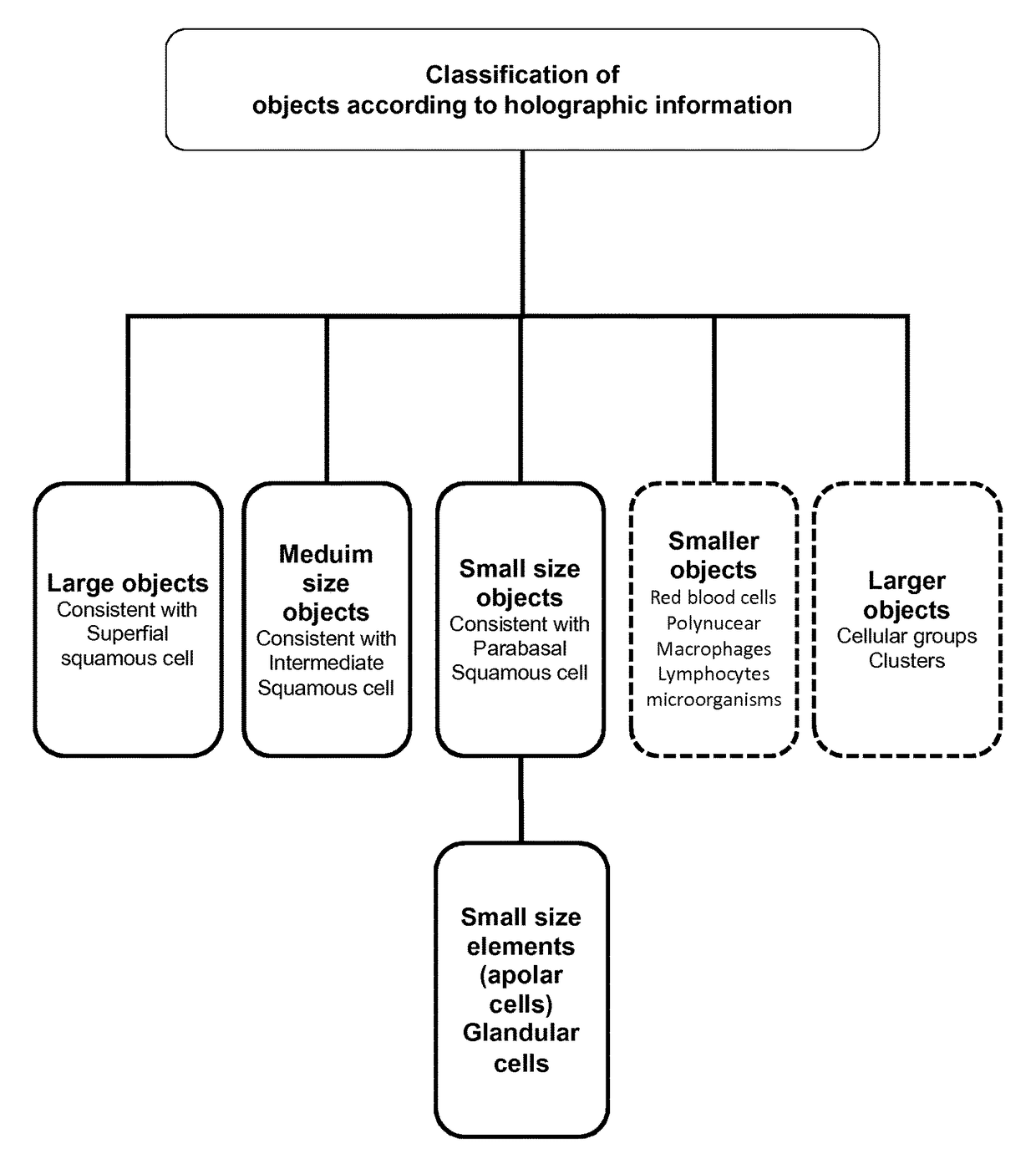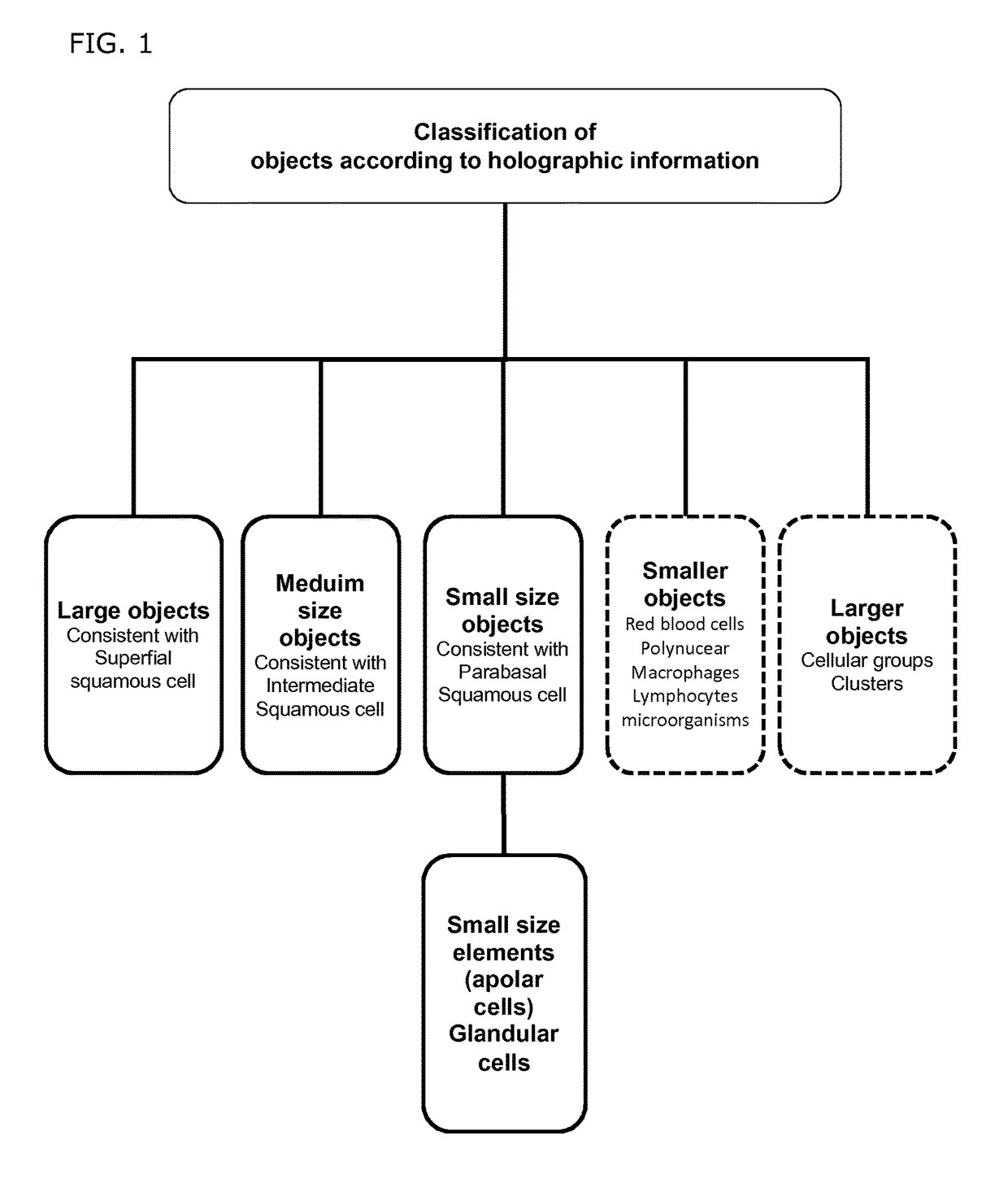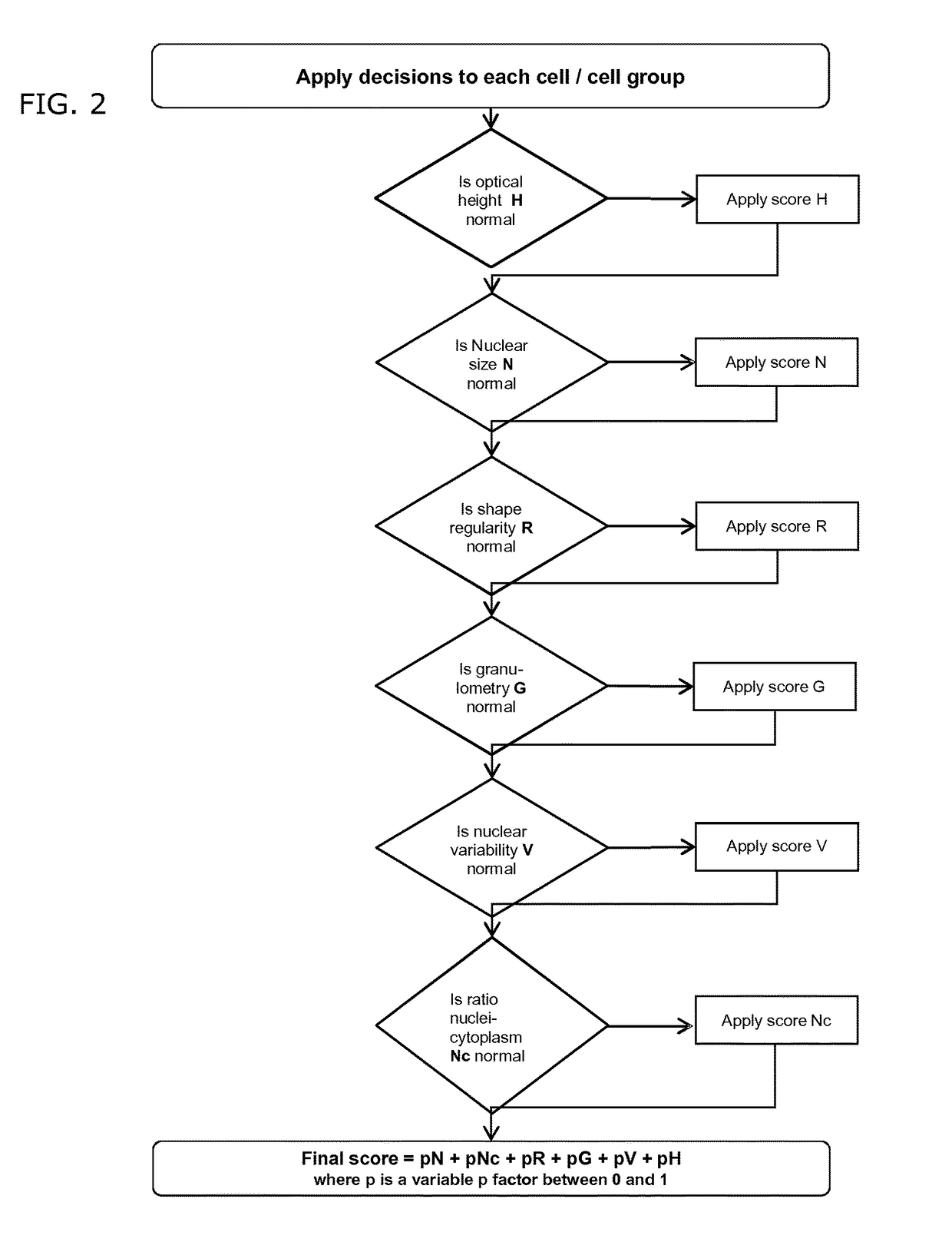Method and system for detecting and/or classifying cancerous cells in a cell sample
a cell sample and cancerous cell technology, applied in the field of diagnostics, can solve the problems of lack of sensitivity, high specificity of pap smear test, and lack of sensitivity, and achieve the effects of non-destructive, fast, inexpensive and objective, and high specificity and sensitiv
- Summary
- Abstract
- Description
- Claims
- Application Information
AI Technical Summary
Benefits of technology
Problems solved by technology
Method used
Image
Examples
example 1
[0143]16 selected patients previously diagnosed by the Thinprep® liquid based cytology confirmed by HPV Abott® assay or histology diagnosis for CIN2 / 3, were analysed on the new Holocyt® diagnostic intelligence software by use of the Holographic Digital Microscope (DHM) using partially coherent laser light.
[0144]DHM enables a quantitative multifocal phase contrast imaging that has been found suitable for quantitative and qualitative inspection, and for 3-dimensional cell imaging. 188 cells were identified and measured in an automated way. Nucleus / Cell Ratio (NCR) and Optical Height Delta (OHD) were extracted in the 3D holographic image. The Optical Height Delta is the difference between Nucleus top height minus Cytoplasm average height. NCR and OHD were separately determined in 2 groups: CIN1 or CIN 2 / 3 patients.
[0145]These results were compared with normal cells either from patients with normal cytology diagnosis either from normal cells within the abnormal smears. Data were importe...
PUM
| Property | Measurement | Unit |
|---|---|---|
| cell size | aaaaa | aaaaa |
| cell size | aaaaa | aaaaa |
| cell size | aaaaa | aaaaa |
Abstract
Description
Claims
Application Information
 Login to View More
Login to View More - R&D
- Intellectual Property
- Life Sciences
- Materials
- Tech Scout
- Unparalleled Data Quality
- Higher Quality Content
- 60% Fewer Hallucinations
Browse by: Latest US Patents, China's latest patents, Technical Efficacy Thesaurus, Application Domain, Technology Topic, Popular Technical Reports.
© 2025 PatSnap. All rights reserved.Legal|Privacy policy|Modern Slavery Act Transparency Statement|Sitemap|About US| Contact US: help@patsnap.com



